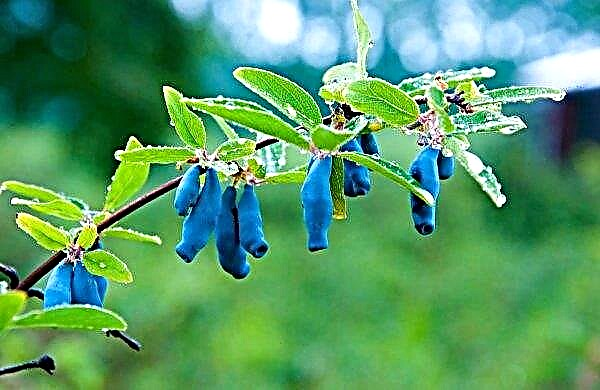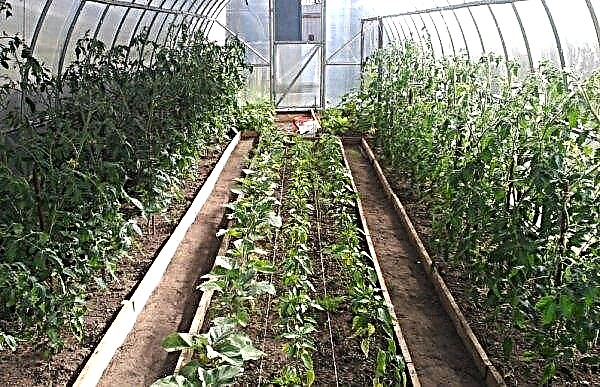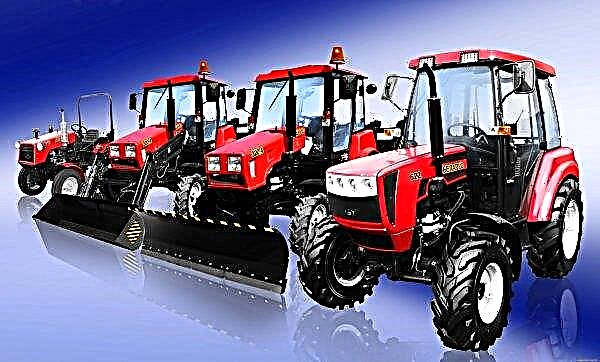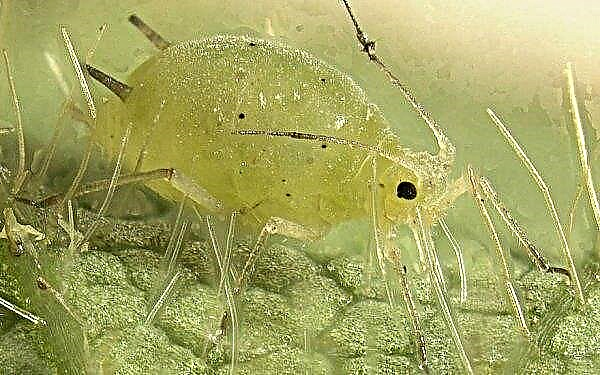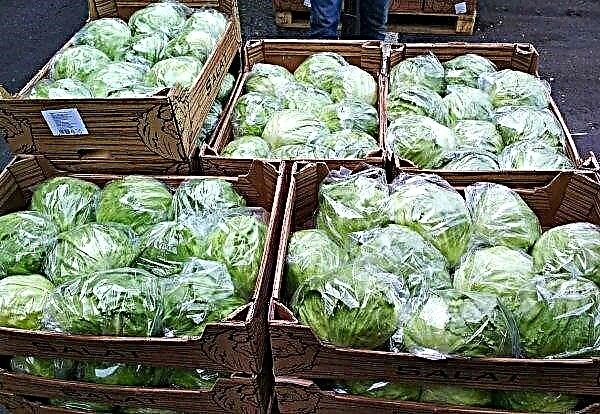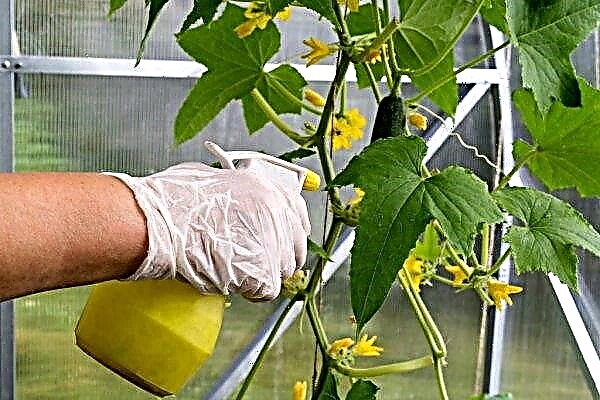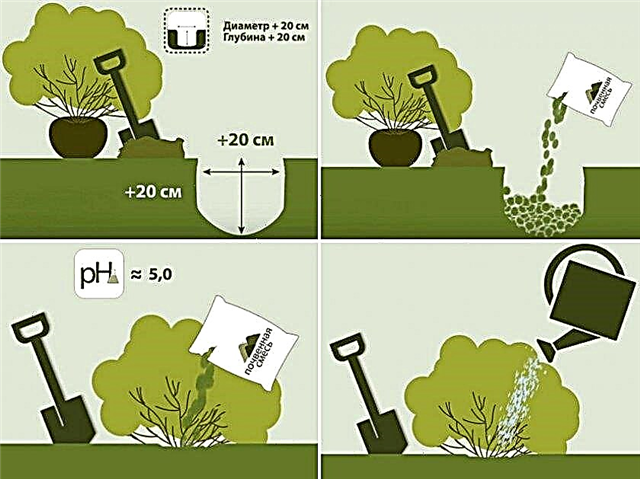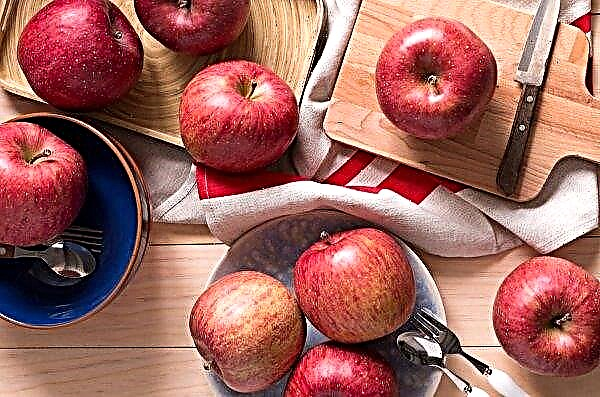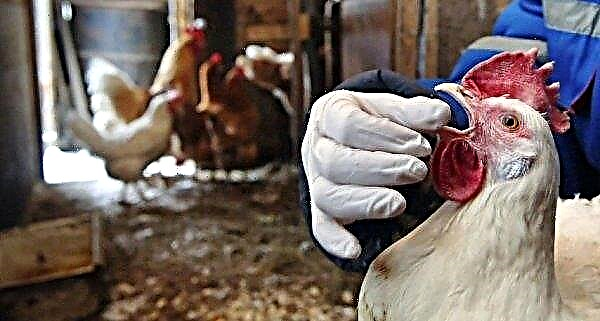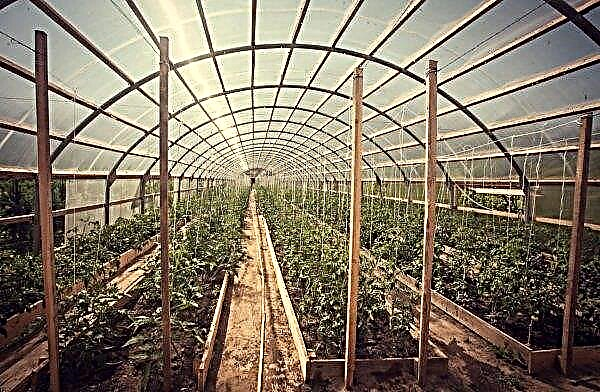A good choice of potato varieties is the key to a high yield. One of the favorite varieties of summer residents is Tuleevsky. It ripens in the medium term, is characterized by high productivity and brings tasty tubers of universal purpose.
Description and characteristic
The Tuleevsky variety appeared thanks to Russian breeders from the Kemerovo Research Institute of Agriculture. In the course of work, several varietal specimens of Russian and Canadian breeding were crossed, in particular Chernsky, Tolokan. The variety is named after the governor of the region where the research institute is located - Tuleyev. Tuleevsky variety registered in 2006. The people called him "governor." For the second decade in a row, he is in the top 10 best varieties.
In plants of this variety, non-sprawling bushes of medium height are formed - up to 30–35 cm. The tubers come out in the correct oval shape, which is very good if they are grown for sale. The color of the peel and the inside is yellow. Rind with a mesh structure and superficial eyes. The pulp contains an average amount of starch - 14-16%. Keeping speed is 90% and higher.
Did you know? Potatoes were cultivated 7–9 thousand years ago on the territory of modern Bolivia. The inhabitants of South America not only consumed tubers for food, but also worshiped this plant, reckoning it among creatures with a soul.
The taste qualities of the tubers are good, rated at 3.6 out of 5. They are suitable for various culinary purposes, and practically do not crumble during cooking. The plant is well resistant to pathogens of scab, alternariosis, late blight. However, it requires protection from the nematode.
Photo gallery
Ripening time
The Tuleyevsky variety is ranked as medium early, which means that the first tubers can be dug up 50-60 days after sprouting, and a full crop can be harvested 80-100 days after placing the seeds in the ground.
Productivity
The variety under consideration shows good productivity - 20–40 tons per 1 ha. On one bush 10 to 14 tubers are tied.
Growing regions
Breeders recommend cultivating Tuley potatoes in the West Siberian region, the Urals, the Far East, and the European part of Russia. According to the observations of gardeners, he shows himself well in any region of the Russian Federation. The variety is suitable for cultivation for industrial purposes and in small suburban areas.
The variety is suitable for cultivation for industrial purposes and in small suburban areas.
Advantages and disadvantages of the variety Tuleevsky
- The advantages of plants and tubers of the described variety include:
- the variety does not require special care and watering;
- adapts well to various climatic and weather conditions;
- forms large tubers;
- resists many viral and fungal diseases;
- characterized by a high level of productivity;
- can be stored for a long time;
- slightly susceptible to mechanical damage;
- tubers can be used for various culinary purposes;
- no need to make chemical fertilizers;
- can be cleaned mechanically.
- Among the shortcomings are worth noting:
- weakly resists the nematode;
- voids form in the tubers in the absence of a normal level of boron in the soil.
Did you know? In the XVI century, when potatoes only got to Europe, it was considered a decorative and poisonous plant. Only in 1772, the Paris Medical Faculty, taking into account the works of the French agronomist Andre Permantier, announced the edibility of tubers.
Planting and growing
Potato Tuleyevsky is recommended to be planted when the soil warms up to + 8 ... + 10 ° C to a depth of 10 cm. That is, the planting time will depend on the growing region and the climatic conditions that are typical for it. But, as a rule, landing is carried out not earlier than mid-April. In warm regions, when cultivated under a film, the plant can be planted earlier - at the end of March.
For planting and cultivation to be successful, it is necessary to properly prepare the soil and planting material.
Preparing material for planting
Seeds before planting require warming. To do this, about a month before the planned premises in the soil they are scattered with a thin layer in a room with a warm temperature - + 15 ... + 18 ° C. The direct rays of the sun should not fall on the seeds. During this time, they develop solanine, which protects against diseases, harmful insects and gives the skin a density. 3 days before planting, the tubers are divided into segments and placed in a sunny place. Right before being placed in the ground, they are lowered into an aqueous solution of wood ash. This is necessary to protect them from nematode attacks.
3 days before planting, the tubers are divided into segments and placed in a sunny place. Right before being placed in the ground, they are lowered into an aqueous solution of wood ash. This is necessary to protect them from nematode attacks.
Processing of planting material by means of “Prestige” (for the prevention of diseases and harmful insects), “Epin-Extra” (for strong immunity in future plants and good germination of sprouts) is also recommended.
Soil preparation and fertilizer
Potato land is being prepared since autumn. The preparation process is as follows:
- thorough cleaning of plant debris;
- deep digging;
- plowing to a depth of 22–25 cm;
- introduction of mineral (urea) and organic fertilizers (manure, ash);
- the formation of high beds.
If no fertilizer was applied in the fall, this is done in the early spring, a few weeks before planting. Dry humus (1 l) and wood ash (1 handful) are added to each well.
Rules for planting potatoes
Before the landing process, you need to familiarize yourself with several rules:
- Tubers of this variety are most often planted in furrows.
- The recommended distance between the holes is 70 cm.
- Seeding depth - 15 cm.
- At the bottom of the hole, it is advisable to lay rotted grass or small thin branches - they will warm the tubers during frosts.
- In each hole, 1-2 planting tubers are placed, they are covered with soil, and they are cultivated with a rake or harrow.
- Landings are covered with a film or non-woven material.

Care Features
Potato care involves the following procedures:
- Watering. They are produced only in the absence of precipitation at high temperature for a month. Humidification should be gentle.
- Hilling. This procedure will need to be done at least 3 times per season. It allows you to protect seedlings from frost. Hilling is done for the first time when seedlings appear - they are sprinkled with earth to the top. The second time the procedure is carried out for plants that bloom. Act at this time you need to be careful so as not to catch the inflorescences. The third time the soil is sprinkled to the trunk when the tops are spread.
- Loosening. Periodically and necessarily after precipitation, the soil between the rows should be loosened. This procedure avoids the formation of a hard crust on the soil surface, and also improves its air and moisture conduction.
- Weeding. The beds need to be kept clean. Weeding is often done - starting from 6-7 days after planting and before harvesting.
- Top dressing. From organic fertilizers for potatoes, bird droppings are useful. It is introduced if the bushes are noticeably weakened. Recommended application time is between the first and second hilling. Also, in protracted bad weather conditions, plants are supported by applying water infusions of fresh cow manure (in a ratio of 1 to 8), bird droppings (1 to 20), nettle leaves (1 to 6), and dandelion leaves (1 to 6).
Important! Fertilizing with chemical fertilizers of potato Tuleyevsky adversely affects its growth and development. Watering leads to watery and rotting of tubers.
Diseases and Pests
The variety is not affected by cancer, scab, alternariosis, late blight, so there is no point in conducting preventive spraying against these diseases. But the mandatory procedure is the treatment against the nematode, from which the Tuleyevsky potato suffers quite often. In order to prevent this dangerous parasite, plants are treated with Tabu and Prestige preparations. When applying funds, you should strictly adhere to the instructions. Since plants often suffer from a lack of boron, due to which voids in the pulp form, it is necessary to treat with an aqueous solution of boric acid (2 g per 10 l) if such symptoms are detected:
Since plants often suffer from a lack of boron, due to which voids in the pulp form, it is necessary to treat with an aqueous solution of boric acid (2 g per 10 l) if such symptoms are detected:
- the flowers begin to fall;
- the apical kidneys dry out;
- stems thicken;
- light green stripes appear along the veins on the upper leaf plate.
Collection and storage of potatoes Tuleyevsky
Harvesting begins when the leaves of the lower tier turn yellow. Mass cleaning is done with yellowing of the tops.
It is better to lower the harvested crop into the cellar not immediately. They put it in bags and put it in a dark place with good ventilation and a temperature of + 15 ... + 20 ° С. After 1-2 weeks, it is examined and discarded unsuitable for storage specimens. After this, the tubers are transferred to the storage with the following parameters: air temperature - 4–5 ° С, air humidity - 90–95%, good air circulation. Storage is pre-disinfected. To save the tubers for seeds, the following manipulations must be made with them:
To save the tubers for seeds, the following manipulations must be made with them:
- To clear of a soil and to wash.
- Place under the sun until the peel turns greenish.
- Send to a place of permanent storage with a temperature of + 3 ° C and a humidity of 95%.
Important! Tubers for planting during storage must be separated from other potatoes. Those that are planned to be eaten, it is allowed to save with other varieties.
Thus, the variety Tuleevsky for more than 10 years of use has managed to gain popularity among many Russian summer residents. It has many strengths, the main ones being lack of whims, good adaptability to various weather conditions, lack of need for watering and chemical fertilizers. Subject to all recommendations for care, the plants are consistently pleased with high yields.

